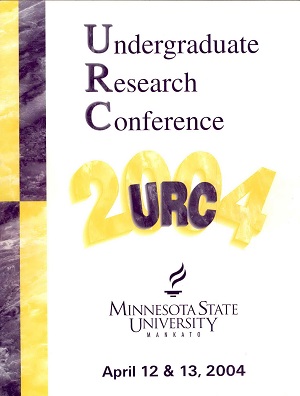Preparation of Echinostomes for Collar Spine Analysis with Scanning Electron Microscopy
Location
CSU 253/254/255
Start Date
12-4-2004 1:45 PM
End Date
12-4-2004 3:15 PM
Student's Major
Biological Sciences
Student's College
Science, Engineering and Technology
Mentor's Name
Robert Sorensen
Mentor's Department
Biological Sciences
Mentor's College
Science, Engineering and Technology
Second Mentor's Name
Michael Bentley
Second Mentor's Department
Biological Sciences
Second Mentor's College
Science, Engineering and Technology
Description
Echinostomes are parasitic trematodes in the family Echinostomatidae that infect homeothermic vertebrates as their definitive host. Echinostomes have complex life-cycles that use snails as their intermediate host. This group of parasites was named for their circumoral ring of collar spines, which aid in attachment in the vertebrate host. Morphometric features of these collar spines, and their smaller body spines have important diagnostic value. These spines can differ in number, placement, size, and relative arrangement. Spine patterns are taxonomically important in differ entiating genus and species. Echinostomes vary in length from 1mm - 20 mm. Collar spines are a common diagnostic tool; yet little is known about body spine arrangement and morphology, as they are much smaller than the collar spines and nearly indistinguishable with light microscopy. This project's goal was to assess various techniques of preparing echinostomes for SEM, in order to utilize the micrographs for taxonomic evaluation. Frozen echinostomes collected from bluewing teal intestines were placed in 70% ethanol for storage, and later rehydrated. These worms passed through a series of replacement additions: water to 2.5% gluteraldehyde in potassium buffer, to a 3M potassium buffer, to 2% osmium tetrachloride, back to buffer, to a final stage of acetone. The echinostomes were then critical-point dried with liquid CO2, mounted and sputtercoated with palladium-gold. These echinostomes were then examined using the scanning elec tron microscope for spine arrangement and size. The results reveal significant information about echinostome morphology and these findings will be helpful in future taxonomic evaluations.
Preparation of Echinostomes for Collar Spine Analysis with Scanning Electron Microscopy
CSU 253/254/255
Echinostomes are parasitic trematodes in the family Echinostomatidae that infect homeothermic vertebrates as their definitive host. Echinostomes have complex life-cycles that use snails as their intermediate host. This group of parasites was named for their circumoral ring of collar spines, which aid in attachment in the vertebrate host. Morphometric features of these collar spines, and their smaller body spines have important diagnostic value. These spines can differ in number, placement, size, and relative arrangement. Spine patterns are taxonomically important in differ entiating genus and species. Echinostomes vary in length from 1mm - 20 mm. Collar spines are a common diagnostic tool; yet little is known about body spine arrangement and morphology, as they are much smaller than the collar spines and nearly indistinguishable with light microscopy. This project's goal was to assess various techniques of preparing echinostomes for SEM, in order to utilize the micrographs for taxonomic evaluation. Frozen echinostomes collected from bluewing teal intestines were placed in 70% ethanol for storage, and later rehydrated. These worms passed through a series of replacement additions: water to 2.5% gluteraldehyde in potassium buffer, to a 3M potassium buffer, to 2% osmium tetrachloride, back to buffer, to a final stage of acetone. The echinostomes were then critical-point dried with liquid CO2, mounted and sputtercoated with palladium-gold. These echinostomes were then examined using the scanning elec tron microscope for spine arrangement and size. The results reveal significant information about echinostome morphology and these findings will be helpful in future taxonomic evaluations.



